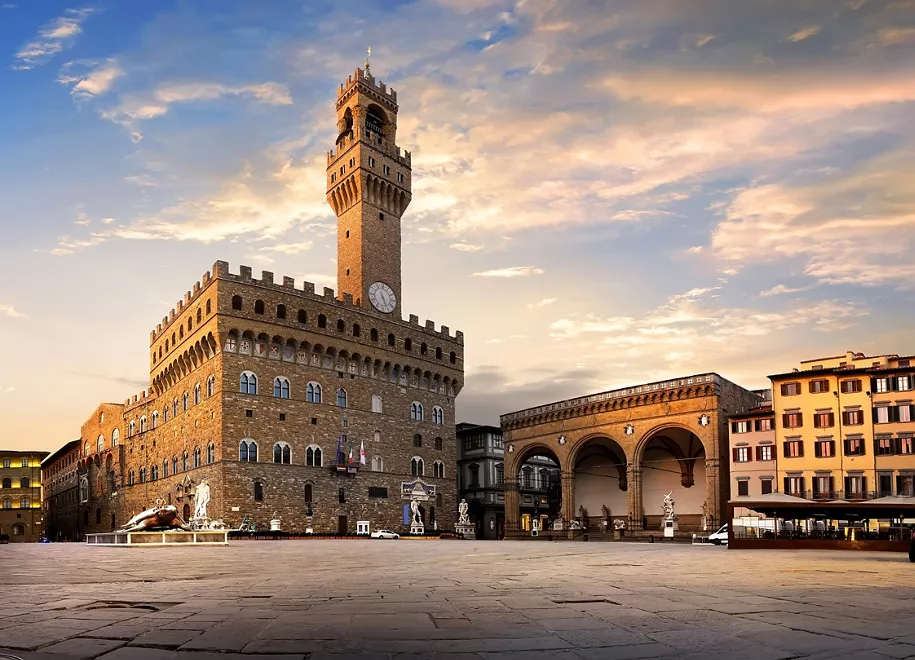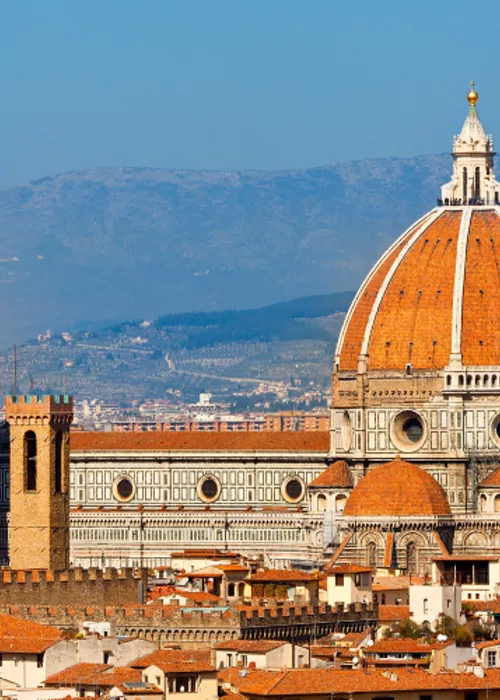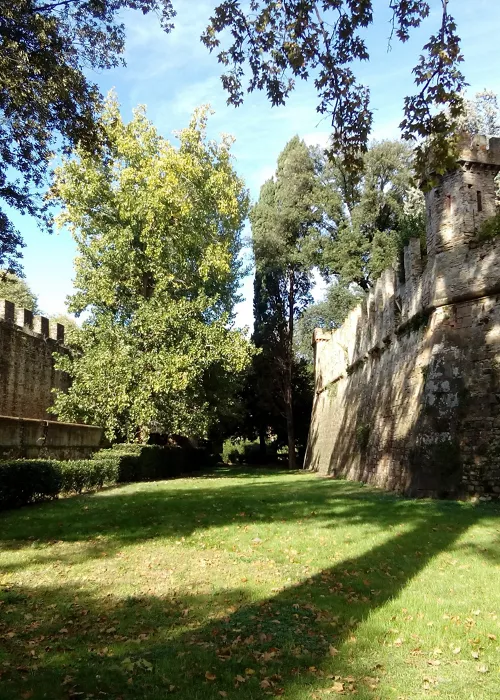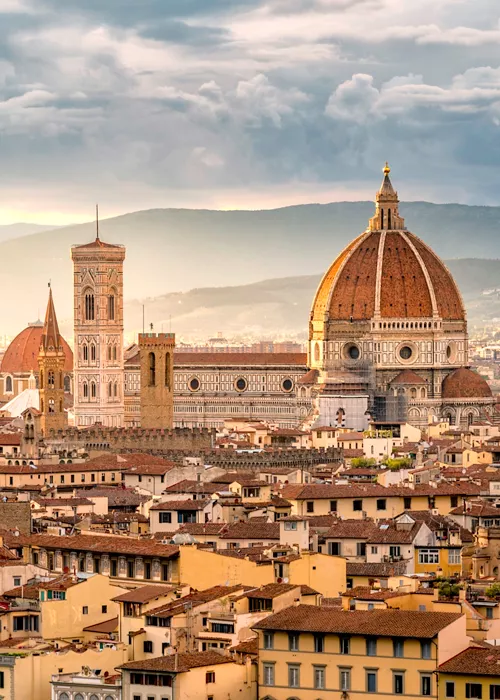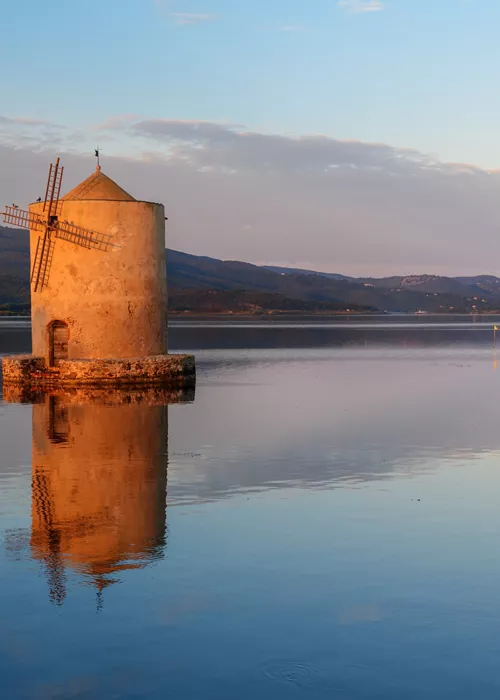Eight alternative ways to experience Florence
5 minutes
Index
Purchase the perfume used by Caterina dei Medici in Europe's oldest pharmacy, take a boat trip, stroll in a romantic English garden, visit an exhibition in a former tobacco factory or go shopping in the craft shops. These are just some of the things we suggest you should not miss on your next trip to Florence.
A visit to the craft shops: art and tradition in skilled hands

The unique character of this city is also based on the skill of the Florentines: over the centuries, they managed to create the great masterpieces of the Renaissance yet also handed down knowledge and sought beauty, even in minor things.
Traditional Florentine craftsmanship is a marvellous example of this: leather processing and paper-making, wrought iron, gold and precious metals, as well as mosaics, silk and precious fabrics embellished with embroidery, decorated ceramics and so much more - and artefacts made in Florentine workshops and factories are to be found in homes all over the world.
Many of these places are open to visitors to explain how such unique pieces are made. All in all, even this is art...
A trip down the River Arno on-board Renaioli boats

Last century, the "renaioli" excavated sand (known as "rena" in the Florentine dialect, hence their name) from the bed of the River Arno for use in construction. The renaioli worked on boats, called "barchetti", used to carry the sand to the river banks, where it was left to dry in the area between the two Ognissanti and San Niccolò weirs. These small boats were also used, if necessary, to convey people from one bank to the other.
Today, a tour on these boats is a not to be missed experience and an ideal way to admire the city and its treasures, such as Ponte Vecchio, from a completely new and different perspective. Seen from the river, Florence seems to be quiet and solemn. "Renaioli" boats can accommodate small groups and it is even possible in summer to take part in theatrical performances.
Custom-made perfume: discovering Florence with all the senses

Creating perfumes is one of Florence's great artisan traditions distinguished by the constant search for new olfactory experiences, including those made-to-measure. Lorenzo Villoresi is a famous Florentine master perfumer who, in his laboratory located in the historic centre, selects and prepares fragrances for customers from all over the world. A museum section of the laboratory - named Osmorama, meaning "the library of aromas" - welcomes visitors into the world of perfumes to learn about the essences at the basis of the process of creating fragrances.
An intoxicating tour of the Officina Profumo Farmaceutica of Santa Maria Novella

When it comes to the art of creating perfumes, there is one place that more than any other embodies its essence and history. The Officina Profumo Farmaceutica of Santa Maria Novella boasts 400 years of uninterrupted activity and is considered to be Europe's oldest historical pharmacy. Even today, for example, its shelves still stock the perfume used by Catherine di Medici when she married Henry II, King of France.
The experience begins in Via della Scala, in the heart of Florence, the pharmacy's historic home in the monastery of Santa Maria Novella. Here, you can buy products as well as learn about their history in the wonderful frescoed rooms of the museum. This olfactory journey taking in history and tradition cannot but culminate in the Garden of Plants. The garden is located outside the city near the Medici Villa in Petraia, where the medicinal herbs used for preparations are grown, as the monks did in past centuries.
Climbing the dome of the Duomo: the thrill of beauty

It has watched over Florence for 600 years and has become the symbol of the city: the Dome of the Cathedral of Santa Maria del Fiore. Designed during the Renaissance by Filippo Brunelleschi, it is still today the largest masonry dome ever built and boasts a more ancient history than even the dome of St. Peter's in Rome. Climbing up inside the Dome is an amazing experience you will recall for a lifetime. Climbing the 463 steps up to the top also reveals the revolutionary technique used to build the dome, a glimpse from above of the main altar of the majestic Cathedral of Santa Maria del Fiore and the huge fresco of the Last Judgement embellishing the interior - as well as the enchanting 360° view of the city below.
Manifattura Tabacchi: culture is good for you and everyone around you

Located just off the historic centre, it was designed by Pier Luigi Nervi in the 1930s rationalist style and, as the name implies, was the tobacco processing plant. The factory occupies an entire block and also includes the Teatro Puccini, one of the most active theatres in Florence. Manifattura Tabacchi ceased production in 2001 and became part of an ambitious urban redevelopment project that sought to create a new centre for art, fashion and design, education and entertainment open to everyone. It now hosts festivals, meetings, temporary exhibitions, concerts and film showings.
All in all, yet another not to be missed experience in Florence!
A visit to the Torrigiani Garden, where nature blends with art

Walking through Florence along its ancient walls, you will come across a tower in the Oltrarno quarter in green surroundings: you have reached the Torrigiani Garden, the largest private garden in the historic centre of Florence.
The Torrigiani family is one of the oldest in the city. In XIX century, they created a large English park in this area, with statues, thousands of plants and buildings inspired by Masonic symbolism. This unexpected site is almost invisible from the outside yet amazes visitors with its vast size and variety of botanical species.
Discover Palazzo Vecchio between theatrical visits and secret passages

This is the oldest palace in Florence and has been its political centre for 700 years. Palazzo Vecchio is also one of the symbols of the city and its rooms have welcomed dukes, priors, secretaries of the Republic, kings and queens... as well as all the people who wrote the history of Florence and the Western world: Dante, Machiavelli, Michelangelo and Leonardo da Vinci, to mention only the most famous.
The Mus.e Association promotes knowledge of the history of this astonishing place (and many others), not the least through theatrical visits conducted by guides in period costumes, or along secret passages leading to unexpected locations. This is another not to be missed opportunity, especially if you are visiting Florence with your children.

